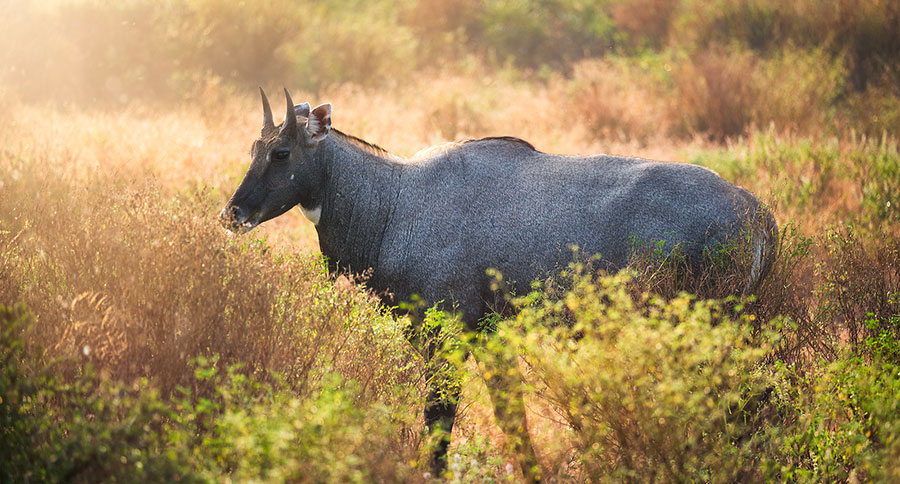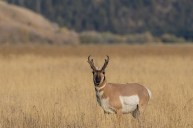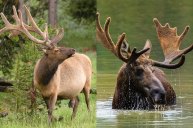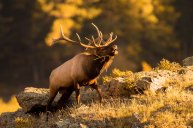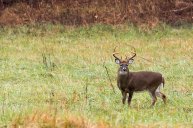How much do you know about the Nilgai antelope? Here's what you need to understand, especially if you intend to hunt them.
The Nilgai antelope may be one of the best kept hunting secrets outside of Texas, but it's high time that you heard about it. Known as the blue bull due to its blue-gray coat, this native beast of southern Asia has now staked its claim on the Lone Star State's plains and brush country.
And they're thriving.
The first Nilgais in Texas were transplants from zoos that made their way to the famous King Ranch way back in the 1930s. The ancestors of those animals now currently roam the southern state. The initial intention was to hunt them, and that's what Texans have continued to do. Like the eland, blackbuck, axis deer, or fallow deer, Nilgai have found a home and established themselves in wild populations.
By most accounts from the Texas Parks & Wildlife Department, their numbers have grown from just a few dozen in the early part of the century to more than 50,000 animals and growing.
According to Texas Outdoor Digest, "they can do well across the scrub country. They're now found from the Baffin Bay-Riviera area all the way down to the Mexican border. In fact, there are currently free-ranging populations in Brooks, Cameron, Hidalgo, Kenedy, Kleberg and Willacy counties."
Nilgai Description
The Nilgai is the largest antelope in Asia, standing about four feet at the shoulder with a head to tail body length typically between five and six feet. Nilgai bulls can weigh 300 pounds or more, with the maximum recorded weight set at a whopping 679 pounds. The females are smaller, but at 250-300 pounds still dwarf a whitetail deer.
Nilgai are built quite sturdy with strong-but-thin legs that help them move easily and swiftly. This antelope is characterized by its deeply sloping back, and a neck with a white patch on the throat. Maybe its most obvious feature is the pendant, or column of coarse hair, found below its white throat patch.
Nilgai don't survive very well in colder climates, as prolonged hard freezes have been known to kill even the hardiest animals, but they can do well across the scrub country and thrive in the heat.
They can also test the patience of the toughest Texas ranchers, thanks to their tendency to have little use for fences. They're often blamed for tearing them to pieces while trying to cross through, instead of merely jumping over.
Nilgai Antelope Hunting
Since good portions of the Texas landscape is so conducive to the lifecycle of this animal, trophy Nilgai hunting is now a common thing in these parts.
Texas is mighty liberal with their Nilgai hunting allowances, providing no bag limit or possession limits and no off season for the exotic species. The Texas Parks and Wildlife Department says "they may be taken by any means or methods at any time of year, however a hunting license and landowner permission are required to hunt them."
If you want to bow hunt for Nilgai, there are further considerations to make. While some bowhunting veterans will tell you that they've spot and stalked Nilgai multiple times without ever drawing their bow, that's just the beginning. In areas where there is some decent cover, these antelopes still exhibit a profound amount of caution and quickly grow wary of encroachment of any kind.
Archery Nilgai hunts require getting in close for the best shot possible, which usually means scouting and then setting up in a ground blind at about 25 to 35 yards away for an optimum kill shot.
According to Texas Bowhunter, "In 1993, Winchester Arms ranked the Nilgai next to the Cape Buffalo as one of the toughest animals to puncture with a frontal quartering shot. They even sent a shooting team to the King Ranch that year to test out their newest big-game bullet, the Black Talon. At a range of about 50 yards it took American Hunter Magazine's associate editor, John Taylor, three shots from a .338 Win. Mag. to drop an average sized bull while it tried to exit into the next county."
When it comes to Nilgai hunting with a rifle, expect to cover some serious territory and figure on taking long shots. Most of the landscape that these antelope call home in South Texas and the Rio Grande Valley is wide open, with little vegetation other than overgrown thickets of native plants.
As noted, they're tough-skinned. Any rifle in the smaller sizes is a legitimate risk.
Nilgai have excellent eyesight and hearing, and since their head is much higher off the ground than a whitetail deer's, they are excellent at spotting anyone approaching, whether they're on foot or in a vehicle or UTV.
A veteran, professional guide service will tell you that most successful Nilgai hunts are done via spot and stalk. Animals that have been hunted frequently will grow wary of humans and vehicles. These free-range antelope aren't like javelina or wild hogs; they are a large and vigilant animal that can be quite dangerous and unpredictable if caught off guard.
Most agree that anything in the .300 caliber range and above will do the job, but follow up shots for one of these big beasts are often required.
Public Land Nilgai Hunts
Even though Texas isn't known as a state with very many public land hunting opportunities, they do exist to a certain extent. For example, Nilgai can be hunted on the Laguna Atascosa National Wildlife Refuge, along the deep south coast near the Texas border.
The refuge has a yearly annual draw for 80 hunters willing to take on the lottery system. Drawn hunts on the Laguna Atascosa can have up to four hunters on one application.
Winners of the draw system are then required to purchase the specific permit at an additional cost. Other lottery-based hunting opportunities feature exotic game to take, it's just a matter of getting drawn, making the trip, and connecting on a chance. Plenty more information can be found online at the Texas Parks and Wildlife Drawn Hunts page.
Nilgai meat is, by many accounts, delicious as a wild game protein. It's easy to yield large amounts of meat, even from a female nilgai cow, and it helps that these exotic game animals have no bag limit. It might be nice to have a good taxidermist and meat processor waiting should you ever find success at a Nilgai hunt.
In many cases, pursuing these animals can resemble a safari-style hunting adventure, pitting you against a large, mature Nilgai bull with keen eyesight and a great sense of smell. Going with outfitters and guides on private property will increase your chances, but at a cost.
However, if authentic exotic game hunting is a main goal of yours as a sportsman or woman, then the cost is well worth it.
Looking for a little more or even hot lunch for your hunting blind? Follow my webpage, or on Facebook and Twitter.
NEXT: WHAT ARE THE BEST DEER HUNTING TIMES THROUGHOUT THE DAY?
WATCH
